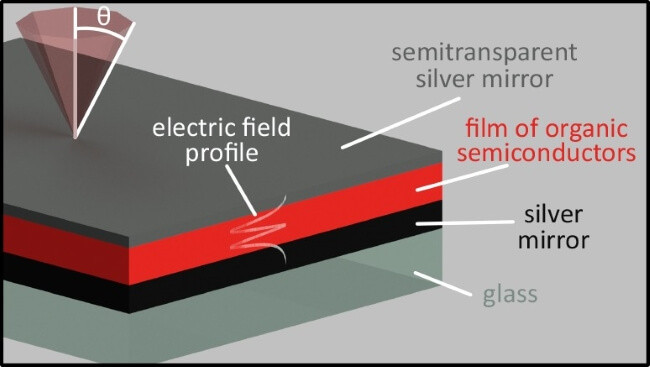Polaritons Could Save OLED Televisions from Early Death
| 11-12-2019 | By Rob Coppinger
High definition television makers have been adopting organic light-emitting diode (OLED) screens because they deliver brighter, more colourful displays, but OLEDs can fall into a dark state and fail.
Organic LED can lose up to 75% of their energy because they can enter dark states where they stop emitting light. These dark states can also lead to the OLEDs stop working entirely. Scientists found that creating a sandwich structure of mirrors, called microcavities, made of silver to trap light and force it to interact with a layer of molecules enhanced the brightness of the OLED molecules even if they are in a dark state. What forces this interaction and OLED molecule brightness is something called a polariton. When the light interacts with the layer molecules it creates a hybrid state, known as a polariton, that mixes light and matter. The researchers believe this could lead to more efficient sensors and solar cells as well as brighter, more efficient OLEDs.

“This work literally sheds light on dark states,” said University of Sheffield vice-chancellor's advanced fellow, Jenny Clark. “We’ve shown that we can use polaritons to force dark states to emit light. Apart from immediate applications for LEDs, this offers a new method for studying organic semiconductors more broadly, using previously unavailable techniques.”
Light Harvesting Efficiency
Interest in polaritons began when researchers were studying how organic semiconductors can improve the light-harvesting efficiency of solar cells. In that process, molecules absorb a photon of light and split it into two electrons. Obtaining two electrons from a photon was an improvement on the solar cell’s efficiency. The researchers then wanted to reverse the process where two electrons would combine into a single, high-energy state that emits a high-energy photon. This led to the microcavities and how these optical structures can have an effect on organic material using light.
The next step the researchers want to take is having different molecules interact with light in the microcavities in different ways to help the scientists better understand the rules that underpin the behaviour. The work was carried out at the University of Sheffield’s Lord Porter Laser Facility. The research involved scientists from the University of Sheffield; the University of California, San Diego; the University of Cambridge; and the University of Kentucky. The research was supported by the United Kingdom’s Engineering and Physical Sciences Research Council, the European Commission, the European Graphene Flagship Project and the United States government’s Department of Energy.
